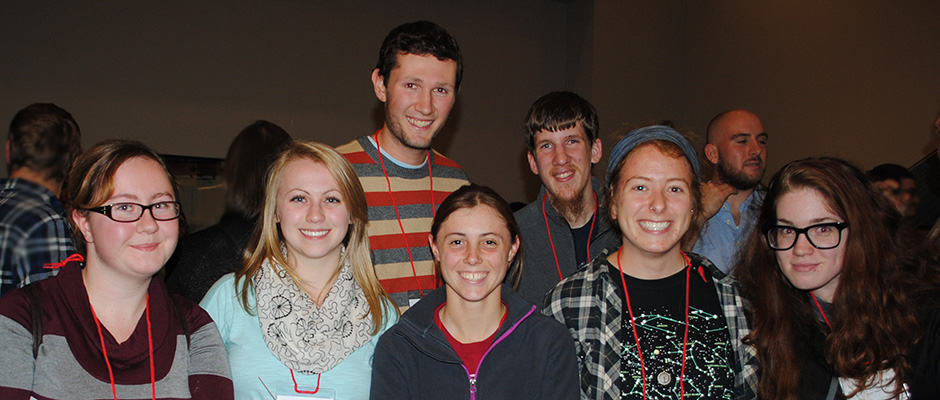Share this article
TWS Conference Special Session: Careers with USFS and WS
Are you a student with a passion for wildlife biology, who’s just not sure what type of career you want after college? Or are you a professional who is considering new career options? If so, then this is the event for you!
At this year’s TWS Annual Conference, the “Careers with U.S. Forest Service and Wildlife Services” session will feature employees from both of these agencies, who will share their experiences as well as career opportunities in the agencies that they are representing. The event will take place on Sunday, October 18 from 1:30-3 p.m. in the Millennium Suite at the RBC Convention Centre.
Both agencies offer unique job opportunities for students and professionals to put their wildlife biology education and experience to use. Take a sneak peek at what you can look forward to at this informative event.
Wildlife Services
Employees with Wildlife Services will share how their jobs assist in the agency’s mission to resolve wildlife interactions that threaten public health and safety, property, agriculture, and natural resources.
“We hope students can learn the diversity of the damage management field and consider Wildlife Services as a place where they could practice their skills,” said Carol Bannerman, the communications specialist at Wildlife Services. “If you want to make a difference in your community, you can help people while practicing wildlife stewardship.”
Wildlife Services employees present at the event will include biologists identified as leaders in various areas. For example, there will be a rabies biologist, a wildlife disease biologist and an eastern region wildlife specialist.
“All of these individuals showed the excellence of their work over the course of last year,” Bannerman said.
Primarily, Wildlife Services hopes to give students an idea of the variety of jobs available including NEPA (National Environmental Policy Act) specialist, airport wildlife hazards biologist, or even working in management positions. Field work can range from working with beavers in swamps to airports in major cities, Bannerman said.
With a staff of about 1,500 people, Wildlife Services works with biologists in other agencies including the U.S. Fish and Wildlife Service, the Department of the Interior, the Bureau of Land Management as well as other state agencies.
“I’m looking forward to having people come and learn more about how Wildlife Services assists other wildlife agencies that they may work for someday,” Bannerman said.
U.S Forest Service
The U.S. Forest Service plans to inform potential future wildlife employees about job opportunities at their agency as well.
The Forest Service employs more than 30,000 people to serve in careers including professional, technical, and administrative positions on the front lines of conservation, intelligent resource utilization and wildland management, according to Brian Logan, the national wildlife program leader at the U.S. Forest Service.
“The Forest Service is made up of thousands of employees from different backgrounds working toward the same goals. We believe that diverse perspectives help us solve problems more effectively. We will have agency wildlife staff on hand research, management, and leadership backgrounds to share their experience with whoever is interested — primarily students, of course,” he said. “It’s always good to hear firsthand from people doing the work.”
For individuals just starting out with early careers with the Forest Service, Logan said they will most likely be applying for wildlife technician jobs. This job often consists of working on a field crew on wildlife projects including bird surveys, mammal surveys and more.
“That’s probably the best job in the agency in my view!” Logan said.
Individuals in this position will collect data in the field and then also work on data entry — a lesser exciting but equally important task, he said.
Students will learn how they can work their way up through the agency from a GS-5 position, a government position that doesn’t require a degree, to GS-7, which in this field could be a wildlife technician with a bachelor’s degree, to a GS-9 or GS-11, which could be a district wildlife biologist. In wildlife biology positions, individuals will work with specialists in other areas including grazing and timber to contribute towards the multiple-use mission of the agency.
“For those wanting a career conducting wildlife research that is applied to resource management on the ground, the Forest Service is a really rewarding place to be, as the studies are issue-driven and relevant to managers, and the atmosphere is rich with interdisciplinary collaborations,” said Monica Tomosy, the Forest Service’s national wildlife research program leader. A graduate degree is necessary for such a position.”
Logan, who has had a diverse background of jobs in the wildlife biology field around the country, advises students to start early.
“I think it’s really important for any student interesting in pursuing a career in wildlife to get as much experience as early as possible,” he said. “Pursue those internships; pursue those temporary assignments or technician positions as soon as you can.”
He also advises students to be open-minded concerning where they are willing to work.
“It’s not always “Discovery Channel,” Some of it is — a lot of it is actually — especially when you’re just getting started,” he said. “But you have to be willing to go wherever the issues are, and that’s where the jobs might be.”
To learn more about the 22nd Annual Conference and the many educational and networking opportunities available for students in Winnipeg this year, visit our conference site.
Header Image: Students enjoy a student reception at last year’s TWS conference in Pittsburgh. At this year’s conference in Manitoba, there will be a special event at the chapter for students to learn about careers with U.S. Forest Service and Wildlife Services.
Image Credit: The Wildlife Society








